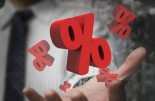DNB: What the state of the world implies for ECB monetary policy

‘A more widespread use of the euro would be a good thing for Europeans.’, said Klaas Knot in his speech at the Peterson Institute in Washington today. He spoke about what the current economic situation means for the ECB’s monetary policy and for the international use of the euro.
Speech Klaas Knot Peterson Institute
Washington, 23 April, 2025
'Thank you for the invitation to speak here in front of such a distinguished audience and at a time of great consequence for the US and European economies. We surely live in interesting times. After the Covid pandemic and the Russian invasion of Ukraine, history is taking a new turn. It is clear that the new US administration has pressed the reset button in its relations with many parts of the world, including Europe. Where these relations will go is still unclear, although I remain hopeful that ‘reset’ will not become ‘eject’. It will probably take some time before we will see the full economic effects of the seismic changes that have taken place over the past few months. Or, as the American rock band The Eagles sang in the 1970s: ‘we’ll find out in the long run.’
But as a central banker, just as other policy makers, you cannot always wait for the long run. So what I would like to do today is to discuss with you some of the implications of the latest developments for the European economy and inflation, for monetary policy and for the role of the euro, based on what we now know.
In the euro area, after a couple of years of high price increases, we have finally left the inflation surge behind us. Looking at our projections, the ECB’s inflation target of 2% is within reach. So one would expect monetary policy to return to stable waters. But then somebody threw a stone in the water.
Basically, we are talking about two stones here. First, the imposition of significant import tariffs and the pretty extreme uncertainty surrounding it, and second the prospect of higher defence spending in the euro area. Given that the situation has not yet stabilised, it is difficult to estimate precisely what the impact of both developments will be on growth and inflation.
With that disclaimer in mind, let me give it a shot.
Firstly, on the impact of the new tariffs. Economists see an increase in tariffs typically as a negative supply shock, because it makes traded goods more expensive. For European firms, US tariffs potentially also contribute to lower foreign demand. But that’s not the whole story. The heightened uncertainty surrounding these policies undermines economic confidence, dragging further down demand. Firms are more hesitant to invest when they cannot be confident about policies, households may be less likely to spend if they are worried about a recession. The recent pessimism on financial markets provides clear evidence of that.
Our own models at the Dutch central bank suggest that a US tariff of 25% on imports from Europe would lower euro area growth by about 0.3 percentage points. Tit-for-tat retaliation would further increase the drag on both the EU and the US. The brunt of the impact on growth would be around the second year after the tariff hike. Afterwards, it would moderate over time, but it would leave a persistent decrease in output. In a world with higher trade frictions, we are all worse off.
Many such estimates have been produced recently, including by the Peterson Institute. So I think that in this crowd, I am preaching to the choir when I say that tariffs are bad for the world economy.
On inflation, views differ more, and the effects are harder to simulate with our models. According to our simulations, inflation would likely rise in the short term, and turn lower again after about a year as a result of the slump in demand. Nevertheless, initial reactions to the tariff news indicate that the effects may play out quite differently. Policy uncertainty is pulling forward the demand effect. And more generally, current movements in markets are going in different directions than our models predict, especially when it comes to the exchange rate. The strong euro, together with falling energy prices, suggests that the near-term impact might not be so inflationary after all. For the medium term, however, there still is the risk that disruptions in global supply chains will put upward pressure on prices. The inability to capture the situation in our models as it is unfolding, combined with the high level of uncertainty, makes this a very challenging environment to navigate.
Especially since, besides the US trade shock, we have to reckon with major fiscal policy changes. The shift in US foreign policy, together with the continued Russian threat, has finally got Europe’s attention when it comes to taking care of its own defence. Many European governments are prepared to borrow substantially more for this aim. In Germany, the famous ‘Schuldenbremse’ – the debt brake – has been lifted. The prospect of higher European defence spending as well as Germany’s historic fiscal boost will have an upward impact on growth in the medium term.
The upcoming boost in government spending is already reflected in business and investor confidence surveys, and in market pricing. Of course, it remains to be seen how fast these ambitions can be realised, and how exactly additional spending will affect growth and productivity. In any case, especially given the still-tight labour markets, it seems likely that the fiscal boost will contribute positively to inflation. An effect that will build up over time, as spending is being ramped up.
What does all this mean for the ECB’s monetary policy?
Needless to say, the ECB Governing Council’s focus is on maintaining price stability, in accordance with our mandate. Our interest rate decisions have been guided by three criteria: the inflation outlook, the underlying inflation and the strength of monetary policy transmission.
First, the inflation outlook. The latest figures and the ECB’s most recent projections, dating back to March, show that inflation is well on track to return to target. In these projections, inflation has been revised upwards slightly in the short term, which means that the moment when we expect to reach 2% has been pushed back a bit, to early 2026. However, this was under the assumption of high energy prices, which have fallen since then. So in the near term inflation might well fall faster due to the euro appreciation, energy prices and the negative impact of uncertainty and tariffs on growth. In the medium term, the effect of tariffs is much more uncertain. Even if the demand effects persist, supply chain disruptions and retaliatory tariffs could push up prices. Similarly, all things equal, the fiscal impulse will contribute positively to inflation. So while near-term risks are downward, for the policy-relevant medium-term this is far less clear.
Second, we carefully monitor the dynamics of underlying inflation, the persistent component of inflation. Inflation in the services sector is still elevated, but falling as expected, as is wage growth. So at the moment this is looking good. We will, however, keep an eye on the extent to which the fiscal boost will put pressure on the already tight labour market.
And third, we consider the strength of monetary policy transmission to the economy. What we see in this chart is that the decreasing degree of monetary tightening is reflected in the loan and savings rates for households and firms, which are already much lower than last year's peak. We also see the loan volumes gradually increasing, a trend which picked up further in February. To assess whether this recovery will continue, we also closely watch how markets are digesting the news of the past weeks and how this is passing through to financing conditions.
On the basis of this assessment, the ECB cut its policy interest rates further by 25 basis points last week to a level of 2.25%. This means the ECB is lifting its foot off the brakes even further.
Looking forward, we will continue to take a data-dependent and meeting-by-meeting approach to determine the right monetary policy response. For me personally, our last meeting was a perfect illustration of the importance of this. Before the US tariff announcements, I was increasingly confident that inflation was developing in line with our intentions, and could have favoured a hold. Recent events have however increased near-term downside risks to inflation, and so I was on board with the rate cut. It insures against the near-term downside risks to both growth and inflation. But as I just argued, over the policy-relevant medium term, uncertainty around the outlook still is much more symmetric. For me, this suggests that a policy rate that is neither accommodative nor restrictive broadly remains the place to be. In any case, we will keep a medium-term focus, and aim to set policy in a manner that will result in inflation around the 2% target sustainably and with sufficient confidence not just in the baseline, but in a range of scenarios.
Ok, so I talked about the economy, inflation, and the ECB’s monetary policy. But what does all this economic mayhem mean for the euro? And especially, what does it mean for the international role of the euro?
One thing you should know is that discussions about the international role of the euro are older than the common currency itself. Back in 1997, so two years before its introduction, I was at an IMF seminar about the implications of the euro for international monetary system. What I recall from the seminar was that there was wild speculation about whether the euro would become a major reserve currency. And few believed that the euro would ever dethrone the dollar as the world’s leading currency.
And of course, that didn’t happen. Upon the introduction of the euro, its international dimension initially developed well. The euro’s external use rose above the combined share of its predecessor currencies, notably the Deutschmark. But then we got the global financial crisis, soon followed by the euro crisis, which laid bare serious design flaws in the Economic and Monetary Union. This did not exactly help to boost the euro’s international appeal. However, commentary has been building that the euro might be heading for a comeback. At a minimum, the momentous shift in US economic policies provides a natural moment to revisit the issue.
The international position of a currency is to some degree based on a self-reinforcing mechanism. People around the world use dollars to make transactions and set prices, and they also hold a lot of dollars. And because of that, other people do the same. Apparently, Kindleberger once compared the role of the dollar as an international currency to the role of English as an international language. I think that is still a good comparison.
Because of the strong pull of this effect, it usually takes a crisis to dethrone a world currency. The pound was replaced as dominant currency in the period between the world wars, while in more recent periods Brexit contributed to further dollarisation of non-EU trade in the UK. And the role of the euro in international financial markets substantially dropped during the euro area crisis years.
With the geopolitical tensions, the trade war, and the unusually high uncertainty about the future course of US economic policy, it is only natural for reserve managers to rethink the diversification of their foreign currency portfolio. A question that then comes up is to which extent the dollar can still be regarded as the safe haven. In the same vein, the current juncture offers an opportunity for the euro. For all its flaws, the European Union remains a pillar of the rules-based world order, which in an increasingly uncertain world may be the ultimate safe but increasingly scarce asset.
This gives rise to the question: should European policy makers pursue a larger international role for the euro?
The ECB has traditionally taken an agnostic view to this. And I have always shared that view. Promoting the international use of the euro has never been part of our mandate as a central bank, a mandate which is indeed solely focused on maintaining internal price stability. The external use of the euro is a reflection of the strength of the European economy and financial markets, and it has both positive and negative implications for the central bank’s control of inflation.
Nevertheless, I think that my agnostic attitude recently seems to have shifted somewhat towards a state that perhaps could best be described as a cautious believer. The main reason for this gradual shift is the need for more European strategic autonomy in an increasingly hostile world.
The benefits are obvious in payments and financial markets. European payments systems and financial markets infrastructure are highly dependent on foreign service providers. This makes the operation of our vital economic functions vulnerable to sudden shifts in policies by foreign countries, to an extent that many Europeans would no longer find acceptable. It is also from this perspective that the digital euro could prove a valuable innovation.
But the benefits extend well beyond such considerations. Invoicing more imported goods in euros helps to shield Europeans from exchange rate shocks. And a greater demand for euro-denominated assets can draw in foreign investors, which reduces financing costs for governments and firms. This is the so-called ‘exorbitant privilege’, that over the years has become so attached to the dollar as the world’s number one currency. This privilege may be even more pronounced in times of stress, due to safe haven flows taking place in such times.
And indeed the smooth absorption of government bonds that have become available on the back of quantitative tightening by the ECB, with a substantial share being snapped up by foreign investors, is an indication of the attractiveness of safe euro-denominated assets for foreign investors. I think we can safely say quantitative tightening has been facilitated by the attractiveness of the euro.
At the same time, a larger international role for the euro comes with responsibility. Foreign entities may look more to the ECB in times of market distress, in a way that the Federal Reserve has been central in the international monetary system. Fortunately, the ECB has evolved over the years, and has a wide range of tools at its disposal to safeguard price stability, and to stabilise financial markets if need be.
So in my view, a more widespread use of the euro would be a good thing for Europeans.
The next step is then of course: what steps could European policy makers take to strengthen the international role of the euro?
Well, as I said, external strength is a reflection of internal strength. The external attractiveness of a currency can therefore be supported by policies that improve the strength and efficiency of its economy and financial markets, backed by robust institutions.
For the ECB that means continuing to fulfil our mandate of maintaining price stability. This helps to underpin a healthy economic development and supports investor confidence in euro-denominated assets retaining their value. During the IMF conference I mentioned, almost 30 years ago, this was seen as a key condition.
I am pleased to see that, overall, we have done a good job of meeting this condition.
As for governments: in addition to remaining committed to being an open, dynamic economy and anchor for the rules-based world, important steps need to be taken to integrate the internal market, and in particular to integrate and deepen financial markets. Here, we still have quite some work to do in Europe.
Strengthening the European internal market would first and foremost be good for the European economy and for European companies and households. The IMF has recently estimated that by reducing the barriers in our internal market to levels comparable to those in the US, the EU could increase its productivity by almost 7 percentage points. As a welcome byproduct, this would probably also increase the attractiveness of the euro as a world currency.
Secondly, we currently do not have a single capital market, like you have here in the US. If you, as a US investor, wish to invest in firms across the EU, you potentially have to deal with up to 27 sets of rules and regulations, for example regarding corporate law and insolvency frameworks. This diminishes the attractiveness of our capital markets and means we forego billions of euros in risk-bearing capital that could help boost new firms and technologies. If we would succeed in harmonising these rules, and remove the remaining barriers to cross-border capital movements, this would lower the cost for foreign investors to enter the European capital market. This would make it easier for European firms to issue debt, which in turn could lead to a further deepening of capital markets. Another example of a self-reinforcing mechanism. This would then boost private investment and make the European economy more resilient. So, the diagnosis is clear, as well as the treatment. But until now harmonising regulation has proven to be a formidable obstacle. Still, if we ever want to equal the dynamism and size of US capital markets, we really need to make progress in this area.
Another specific policy action that may contribute to a larger role for the euro is the further issuance of common safe assets - eurobonds. They were once quite controversial, but the experience with EU bonds that were issued during the pandemic was positive. The demand for these bonds among non-European investors has been a welcome reflection of investors’ faith in Europe’s financial solidity.
The European Commission has proposed the issuance of additional common debt to finance higher defence spending. Further issuance of this euro-denominated safe asset would be a strong signal of further unity and integration in these divisive times. It would also signal that the issuance of common debt during the pandemic was not a one-off, and more structural issuance would increase the attractiveness for investors. It could be particularly helpful at a time when investors may be considering the distribution of their international asset holdings. Mechanically, adding supply to the market helps to make the eurobond market more liquid, potentially further drawing in foreign investors. This could also have helpful spillovers to other parts of the European debt market.
Of course, the strength of the euro is highly dependent on sustainable public finances. The average euro area government debt to GDP ratio is currently 88 percent, which is notably lower than the US federal debt ratio. But it is very high in a number of countries. Given the urgency of higher European defence spending, a temporary increase in debt may well be unavoidable. At the same time, we should avoid a continuous “ratcheting up” of debt levels after crises. Financing common challenges with EU debt is not a way to circumvent the need for sustainable public finances. The servicing costs of EU debt are ultimately borne by the same taxpayers as those of national and local debt, even if common issuance can lower the average cost. In the medium term, higher EU debt should therefore go hand in hand with lower national debt levels. And an exception to the EU fiscal rules for national spending should be limited in time and scope, in other words for defence expenditure only.
I am wrapping up. For sure, the momentous events of the past months will have their bearing on the economy and inflation. For the ECB’s monetary policy, this means that we will continue to take a data-dependent and step-by-step approach to determine the right monetary policy response.
Whether current events will have a positive impact on the international use of the euro is hard to say, but I would not be surprised if it did to some extent. This can prove valuable for the European economy. At the same, boosting the international role of the euro cannot be a standalone policy target. As I’ve tried to make clear, external strength is a reflection of internal strength. Our priority in Europe should be to further strengthen the European internal market. Especially in times of high uncertainty, a robust EU internal market serves as a first line of defence against external shocks. That should be the focus of European policymakers. Ultimately, a stronger euro area will imply a more attractive euro, which in turn could give a welcome push towards reaching our strategic economic goals. Whether you are an agnostic, a cautious believer, or preaching the gospel in the streets, that is simply how it works.
And all that aside, first best would of course be that we maintain a degree of international economic cooperation and stability. The United States and Europe have longstanding and deep historical and economic ties. And we have both long been solid pillars of a world economy that is based on rules. It is my conviction that this system has worked very well for both of us, and that all of us can continue to benefit from it. After all, to cite The Eagles once again, the modern world economy is a bit like Hotel California: you can check out any time you like, but you can never leave.'









